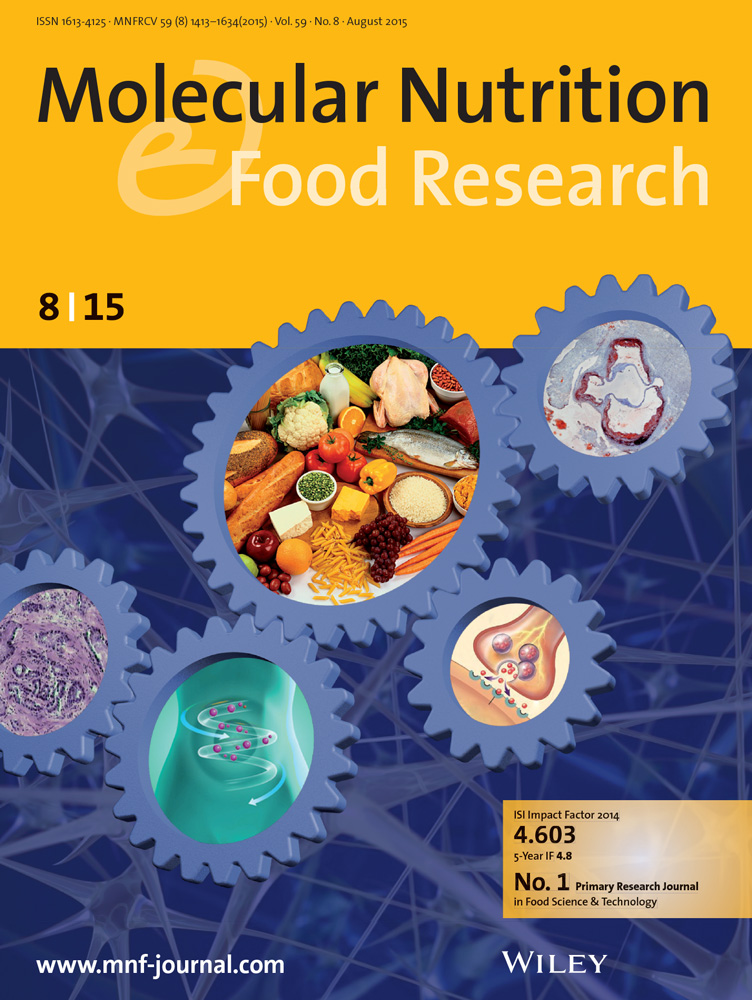大规模、数据驱动的方法在营养保健领域优先考虑化合物靶向条件的应用:槲皮素植物体(QuercefitTM)对代谢障碍成人不平衡脂质状况的案例研究
IF 4.2
2区 农林科学
Q1 FOOD SCIENCE & TECHNOLOGY
引用次数: 0
摘要
在预防保健方面,对促进健康的天然化合物的系统鉴定的需求正在上升。槲皮素是一种存在于各种水果和蔬菜中的酚类化合物,以其抗氧化和抗炎特性而闻名,可以改善2型糖尿病和NAFLD等疾病的脂质特征和代谢功能障碍。本研究将一种新型的计算机药物再利用方法应用于槲皮素,分析了超过800种疾病和30种槲皮素相关疾病的基因表达特征库,以优先考虑分子靶点。我们的发现揭示了槲皮素和高胆固醇血症之间强有力的计算联系。为了验证这一点,我们在具有边缘性代谢特征的健康成人中使用高生物可及性槲皮素制剂(QuercefitTM)进行了一项概念验证临床研究,证实了槲皮素对健康的益处。这项研究强调了槲皮素在治疗高胆固醇血症方面的已知潜力,并证明了计算方法在推进天然化合物发现和重新定位方面的力量。将计算机预测与人体研究相结合,可以为在膳食补充剂中更精确地或替代地使用生物活性化合物铺平道路。本文章由计算机程序翻译,如有差异,请以英文原文为准。
An Application of a Large-Scale, Data-Driven Approach to Prioritize Compound-Targeted Conditions in the Nutraceutical Space: Case Study of QuercefitTM (Quercetin Phytosome) Toward Unbalanced Lipid Conditions in Metabolically Challenged Adults.
In preventive healthcare, the demand for systematic identification of wellness-promoting natural compounds is rising. Quercetin, a phenolic compound found in various fruits and vegetables, is known for its antioxidant and anti-inflammatory properties, improving lipid profiles and metabolic dysfunctions in conditions like Type 2 diabetes and NAFLD. This study applies a novel adaptation of an in-silico drug repurposing methodology to quercetin, analyzing a gene expression signature library of over 800 diseases and 30 quercetin-related conditions to prioritize molecular targets. Our findings revealed a strong computational link between quercetin and hypercholesterolemia. To validate this, we conducted a proof-of-concept clinical study using a high-bioaccessibility quercetin formulation (QuercefitTM) in healthy adults with borderline metabolic profiles, confirming health benefits. This study highlights quercetin's known potential in managing hypercholesterolemia and demonstrates the power of computational methods in advancing natural compound discovery and repositioning. The integration of in-silico predictions with human studies could pave the way for more precise or alternative use of bioactive compounds in dietary supplements.
求助全文
通过发布文献求助,成功后即可免费获取论文全文。
去求助
来源期刊

Molecular Nutrition & Food Research
工程技术-食品科技
CiteScore
8.70
自引率
1.90%
发文量
250
审稿时长
1.7 months
期刊介绍:
Molecular Nutrition & Food Research is a primary research journal devoted to health, safety and all aspects of molecular nutrition such as nutritional biochemistry, nutrigenomics and metabolomics aiming to link the information arising from related disciplines:
Bioactivity: Nutritional and medical effects of food constituents including bioavailability and kinetics.
Immunology: Understanding the interactions of food and the immune system.
Microbiology: Food spoilage, food pathogens, chemical and physical approaches of fermented foods and novel microbial processes.
Chemistry: Isolation and analysis of bioactive food ingredients while considering environmental aspects.
 求助内容:
求助内容: 应助结果提醒方式:
应助结果提醒方式:


